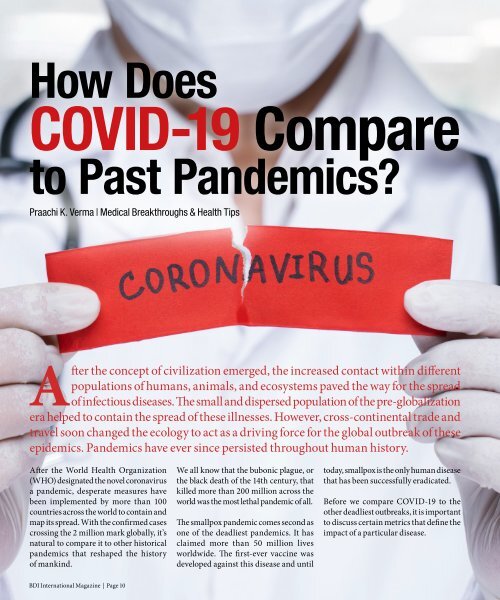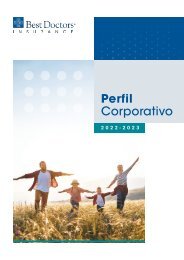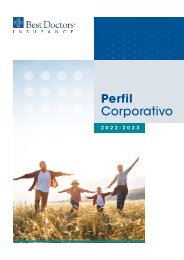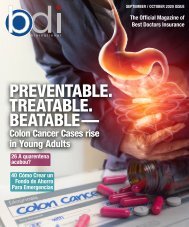Create successful ePaper yourself
Turn your PDF publications into a flip-book with our unique Google optimized e-Paper software.
How Does<br />
COVID-19 Compare<br />
to Past Pandemics?<br />
Praachi K. Verma | Medical Breakthroughs & Health Tips<br />
COVID-19<br />
• Caused by: SARS-CoV-2<br />
• Place of origin: Wuhan, China<br />
• R0: 2-3<br />
• CFR: 3.4% globally<br />
• Treatment: No treatment available,<br />
only supportive care is provided.<br />
Antibiotics help to treat secondary<br />
infections and some antivirals help in<br />
recovery.<br />
R naught (R0) is a mathematical equation<br />
to calculate the average number of people<br />
one sick person will infect. The range for<br />
COVID-19 is 2-3. R0 represents the<br />
epidemic potential of a pathogen, but the<br />
numbers are highly situation-dependent.<br />
Situations like dense population, poor<br />
socio-economic conditions, the<br />
prevalence of malnutrition and other<br />
illnesses, and climatic factors increase the<br />
intensity of disease outbreak. R0 is a useful<br />
metric for health authorities, as an R0<br />
lower than 1 causes the disease to die out<br />
in a population. Since there is a lot of<br />
uncertainty about the novel coronavirus<br />
outbreak, things become challenging for<br />
public health agencies to figure out how<br />
to effectively lower the R0.<br />
for Disease Control and Prevention<br />
(CDC), the scale of the 1918 influenza<br />
strain might be the best match to<br />
understand the pattern of COVID-19<br />
outbreak.<br />
With an R0 of 2, COVID-19 is slightly<br />
more infectious than the Spanish Flu.<br />
While the 1918 flu was more widespread<br />
and mostly affected the younger<br />
population (20 to 50 year-olds), COVID-19<br />
is more dangerous for older adults.<br />
Hong Kong Flu-1968<br />
• Caused by: H3N2<br />
• Place of origin: Hong Kong<br />
• R0: 1.2-3<br />
• CFR: 0.5%<br />
• Treatment: Antibiotics were effective<br />
against secondary bacterial infections<br />
The H1N1 viruses were the ancestors of<br />
H2 & H3 variants. That being said, when<br />
H3N2 first emerged in 1968, people who<br />
were over 50 had their immunity set by<br />
other similar viruses that circulated since<br />
1918. The improved health care system<br />
coupled with the developed immunity of<br />
the aged population resulted in a lower<br />
CFR of the H3N2 as compared to the 1918<br />
outbreak.<br />
Nevertheless, the Hong Kong Flu was one<br />
of the biggest flus of the 20th century. In<br />
comparison to the 1968 flu, even with a<br />
higher CFR, COVID-19 is less widespread<br />
and has resulted in fewer deaths so far.<br />
SARS-2003<br />
• Caused by: SARS-CoV<br />
• Place of origin: Guangdong province,<br />
Southern China<br />
• R0: 2-5<br />
• CFR: 15%<br />
After the concept of civilization emerged, the increased contact within different<br />
populations of humans, animals, and ecosystems paved the way for the spread<br />
of infectious diseases. The small and dispersed population of the pre-globalization<br />
era helped to contain the spread of these illnesses. However, cross-continental trade and<br />
travel soon changed the ecology to act as a driving force for the global outbreak of these<br />
epidemics. Pandemics have ever since persisted throughout human history.<br />
After the World Health Organization<br />
(WHO) designated the novel coronavirus<br />
a pandemic, desperate measures have<br />
been implemented by more than 100<br />
countries across the world to contain and<br />
map its spread. With the confirmed cases<br />
crossing the 2 million mark globally, it’s<br />
natural to compare it to other historical<br />
pandemics that reshaped the history<br />
of mankind.<br />
We all know that the bubonic plague, or<br />
the black death of the 14th century, that<br />
killed more than 200 million across the<br />
world was the most lethal pandemic of all.<br />
The smallpox pandemic comes second as<br />
one of the deadliest pandemics. It has<br />
claimed more than 50 million lives<br />
worldwide. The first-ever vaccine was<br />
developed against this disease and until<br />
today, smallpox is the only human disease<br />
that has been successfully eradicated.<br />
Before we compare COVID-19 to the<br />
other deadliest outbreaks, it is important<br />
to discuss certain metrics that define the<br />
impact of a particular disease.<br />
CFR, or Case Fatality Rate, indicates the<br />
number of people who have died after<br />
contracting the disease. This rate differs<br />
according to location, lifestyle, and age.<br />
For instance, the CFR for COVID-19 in<br />
China has been 4%, while in Italy, it is<br />
close to 10%.<br />
The Spanish Flu Pandemic-1918<br />
• Caused by: H1N1<br />
• R0: 1.8<br />
• CFR: 2.5%<br />
• Treatment: None, antibiotics and<br />
antivirals didn’t exist back then.<br />
The influenza pandemic of 1918, which<br />
caused close to 50 million deaths<br />
worldwide, was the third deadliest in the<br />
history of pandemics. Though the<br />
COVID-19 outbreak is not caused by the<br />
influenza virus, according to the Centers<br />
<strong>BDI</strong> <strong>International</strong> <strong>Magazine</strong> | Page 10 BestDoctorsInsurance.com | Page | Page 11 11
















